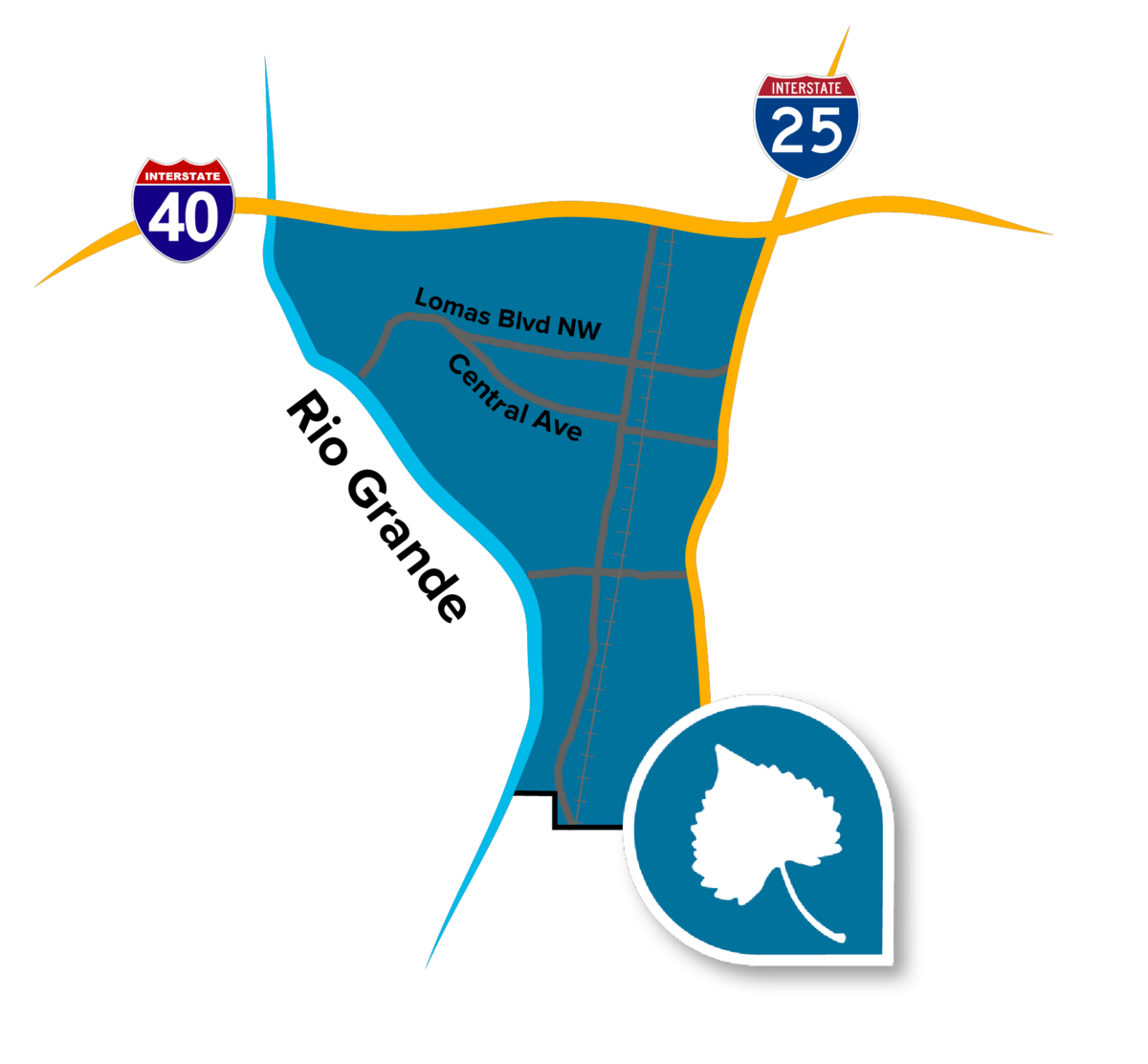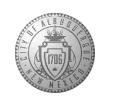 The Central ABQ Community Planning Area (CPA) is centrally located in Albuquerque, spanning the area between I-25 and the Rio Grande and between I-40 and the city’s southern boundary with Bernalillo County. Central ABQ is home to the original Old Town settlement and New Town, now known as Downtown, which developed with the arrival of the railroad in the 1880s. Central ABQ has many historic sites that are representative of the important periods in the area’s history, which include the San Felipe De Neri Church, Kimo Theater, El Vado Motel, and the Railyards. Historic Route 66 also transects Central ABQ—originally along Fourth Street, following the Camino Real, then later on its current route along Central Avenue.
The Central ABQ Community Planning Area (CPA) is centrally located in Albuquerque, spanning the area between I-25 and the Rio Grande and between I-40 and the city’s southern boundary with Bernalillo County. Central ABQ is home to the original Old Town settlement and New Town, now known as Downtown, which developed with the arrival of the railroad in the 1880s. Central ABQ has many historic sites that are representative of the important periods in the area’s history, which include the San Felipe De Neri Church, Kimo Theater, El Vado Motel, and the Railyards. Historic Route 66 also transects Central ABQ—originally along Fourth Street, following the Camino Real, then later on its current route along Central Avenue.
Central ABQ CPA is home to many neighborhoods, including Barelas, EDo, Martineztown, Raynolds Addition, Sawmill, South Broadway, and Wells Park. Some of these neighborhoods have been designated as historic districts and have varying architectural styles depending on the historical era in which they were developed. Around Old Town, homes and businesses are traditional adobe, and Victorian architecture is more common in neighborhoods that date to the railroad era.
Many of the city’s museums, cultural facilities, and entertainment venues are located in Central ABQ. Some of the cultural facilities include the ABQ BioPark Zoo, Aquarium and Botanic Garden, South Broadway Cultural Center, and National Hispanic Cultural Center. Many concert venues and theaters are along or near Central Avenue, and many of the City’s museums are located near Old Town.
Central ABQ’s topography is characterized by the Rio Grande and Bosque. Central ABQ includes a network of trails throughout the Rio Grande Valley State Park along the east side of the river, which includes Paseo del Bosque Trail, Rio del Norte Trail, and other multi-use trails.
